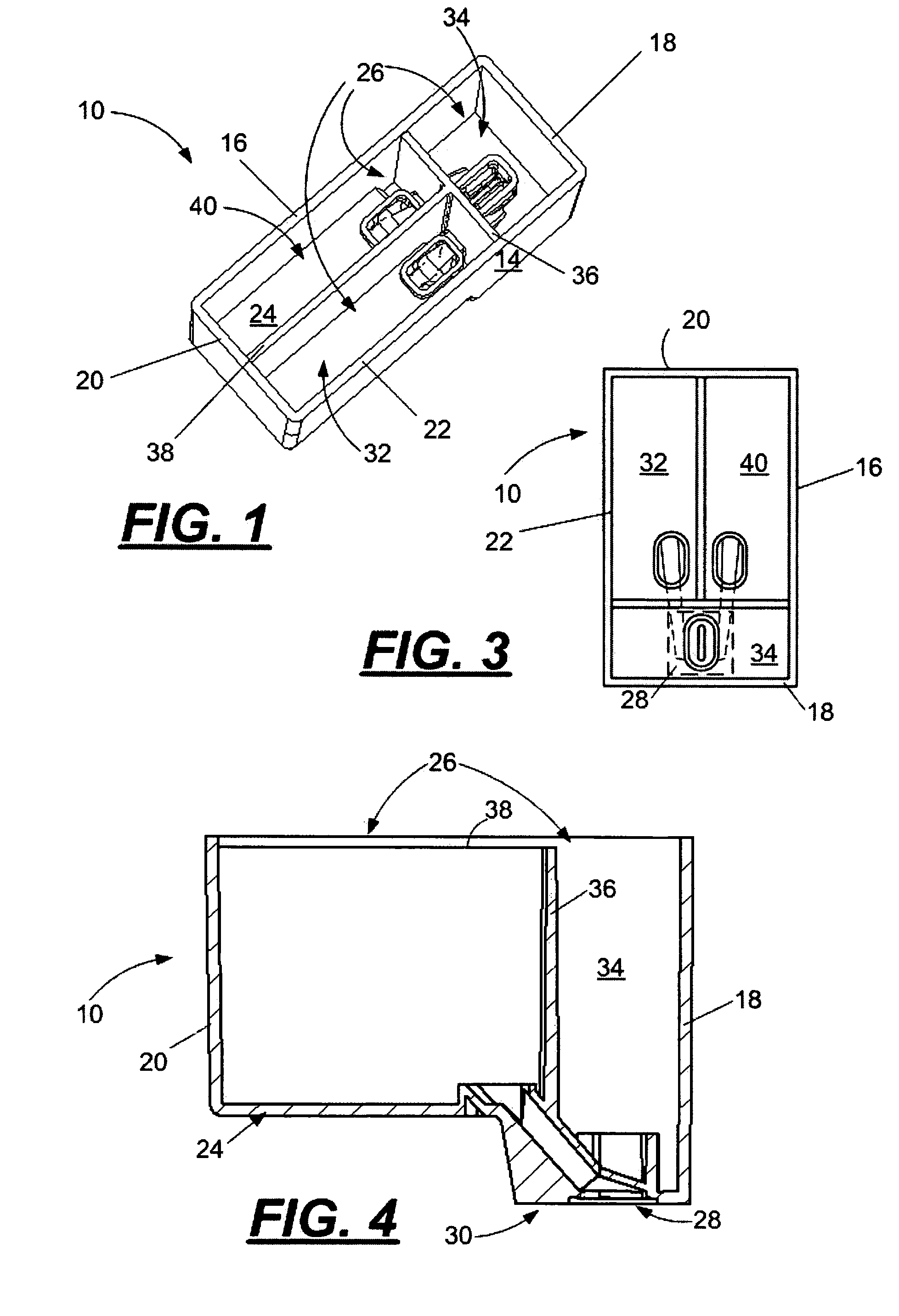Process for manufacturing a micro-fluid ejection device
a technology of microfluid ejection and manufacturing process, which is applied in the field of microfluid ejection devices, can solve the problems of limited fluid passageway spacing in the ejection head substrate, difficulty in adequately segregating multiple fluids in the cartridge from one another, and reducing the efficiency of ejection head production, so as to reduce the cost of manufacturing, reduce the size of the operative part, and improve the effect of ejection speed
- Summary
- Abstract
- Description
- Claims
- Application Information
AI Technical Summary
Benefits of technology
Problems solved by technology
Method used
Image
Examples
Embodiment Construction
[0028]With reference to FIGS. 1–5, a multi-fluid cartridge body 10 for a micro-fluid ejection device, such as an ink jet printer 12 is illustrated. The multi-fluid body 10 includes a body structure 14 having exterior side walls 16, 18, 20, and 22 and a bottom wall 24 forming an open-topped, interior cavity 26. An ejection head area 28 is disposed adjacent a portion 30 of the bottom wall 24 opposite the interior cavity 26. At least two segregated fluid chambers 32 and 34 are provided within the interior cavity 26 of the body 10. A dividing wall 36 separates chamber 32 from chamber 34. An additional dividing wall 38 may be provided to separate chamber 40 from chamber 32 for a body 10 containing three different fluids. Independent fluid supply paths are provided from each of the fluid chambers 32, 34, and 40 to provide fluid to an ejection head structure 44 attached adjacent the ejection head area 28 of the body 10. The fluids are retained in the chambers 32, 34, and 40 by a cover 42 a...
PUM
| Property | Measurement | Unit |
|---|---|---|
| width | aaaaa | aaaaa |
| height | aaaaa | aaaaa |
| height AH | aaaaa | aaaaa |
Abstract
Description
Claims
Application Information
 Login to View More
Login to View More - R&D
- Intellectual Property
- Life Sciences
- Materials
- Tech Scout
- Unparalleled Data Quality
- Higher Quality Content
- 60% Fewer Hallucinations
Browse by: Latest US Patents, China's latest patents, Technical Efficacy Thesaurus, Application Domain, Technology Topic, Popular Technical Reports.
© 2025 PatSnap. All rights reserved.Legal|Privacy policy|Modern Slavery Act Transparency Statement|Sitemap|About US| Contact US: help@patsnap.com



